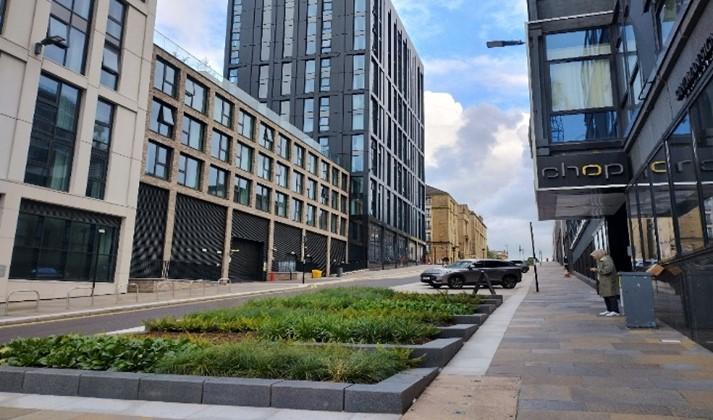Report showcases Glasgow’s ‘transformative’ Avenues programme

The remarkable transformational impact made by Glasgow’s £123 million Avenues programme has been highlighted in a new report.
With four fully completed and a further seven now under construction, the latest annual update makes clear the progress of the Avenues in supporting the physical transformation and regeneration of the city centre.
A number of Avenues are currently in the design phase and will commence with spades in the ground across 2026-27.
Councillor Angus Millar, convener for City Centre Recovery at Glasgow City Council, said the Avenues were putting in place a cleaner and more attractive European-style city centre environment which was, “better for people and better for businesses”.
Funded through the Glasgow City Region Deal, and with further £21m support from Sustrans/Transport Scotland for the Avenues Plus programme, the programme is the biggest transformation of city centre thoroughfares since the hugely successful pedestrianisation of Buchanan Street in the 1970s.
As well as handing over road space to pedestrians, the Avenues programme includes lining streets with hundreds of new trees, improving lighting features, installing rain gardens and additional greenery, and introducing new cycle lanes.
The report includes before and after photographs of the Avenues which have been completed this year, Cambridge Street, Holland Street, Pitt Street and Sauchiehall Street, illustrating how they have helped positively change the look and feel of the surrounding areas.
Avenues are currently ongoing at Argyle Street West, Cowcaddens Road and Dobbies’ Loan, Duke Street and John Knox Street, North Hanover Street and Kyle Street, and South Portland Street. Most of these ongoing projects will be complete in Spring 2026, with North Hanover Street Avenue expected to be complete in November 2026.
The George Square transformation project is part of the Avenues programme, and contractors went onsite in May 2025, with improvements to nearby streets part of the project - with work on West George Street and slabbing in front of the City Chambers already almost complete. The work on the Square will be complete in August 2026, with the final stages in the project - at Cochrane Street, George Street and the stretch of North Hanover Street between the Square and Cathedral Street - complete in the Spring of 2027.
Councillor Millar said: “The Avenues project is about delivering the biggest change to many of our city centre streets in 50 years. A more attractive city centre is better for people and better for businesses.
“This report really does make clear how the early completions are having a transformative impact. And Glaswegians, as well as visitors to our city, can look forward to much more of that. Even those still under construction, such as Argyle Street West between the M8 and Hielanman’s Umbrella, are already showing their potential for positive change and I’d encourage anyone in that section of town to go and have a look.
“Complemented by major new development emerging across the city centre, and of course the renewal of George Square, at the end of the Avenues programme our city centre will have the look and feel an international city like ours deserves, and one ready for the century ahead.”
The first half of 2026 will see the beginning of work on Avenues at both Argyle Street East and Stockwell Street, with Avenues at Clyde Street and High Street expected to begin at the end of 2026.
The Argyle Street East Avenue will enhance the retail experience on Argyle Street, eventually connecting to other Avenues at Argyle Street West, Stockwell Street and High Street. This Avenue will feature a segregated cycle link, an upgraded traffic signal network, improved bus journey times through a new eastbound route along the current pedestrian precinct, new pavements and potted trees (the low-level rail tunnel does not allow for in-ground trees).
The Clyde Street Avenue will improve access to the River Clyde - in recognition of the value of the river to the city - through the reduction of traffic and improving pedestrian and cycling connections, and is likely to feature segregated cycling routes, trees and raingardens, upgraded traffic signals and enhanced pavement and road surfaces.
The High Street Avenue will both help regenerate the historic High Street area and provide a key north-south link between Trongate, George Street, Duke Street, and the University of Strathclyde Campus, and will feature a segregated cycling lane, trees and raingardens where possible, traffic signal renewal, and enhanced public realm.
The Stockwell Street Avenue will provide an additional link from the South City Way to the city centre’s active travel network, and this project will see segregated cycling lanes, upgraded traffic signals, improved pavement and road surfaces, and trees and rain gardens.
The final Avenue - at the Broomielaw - will begin in 2027.












